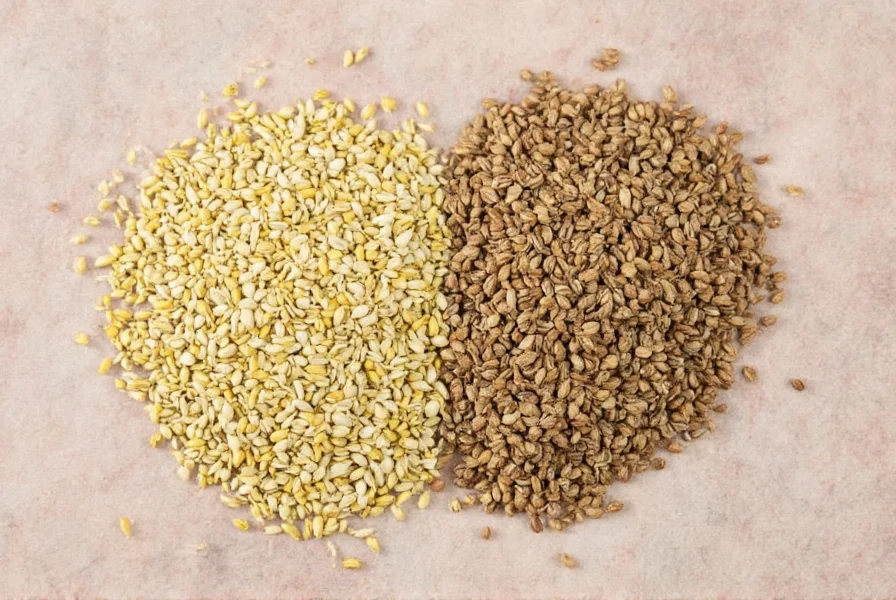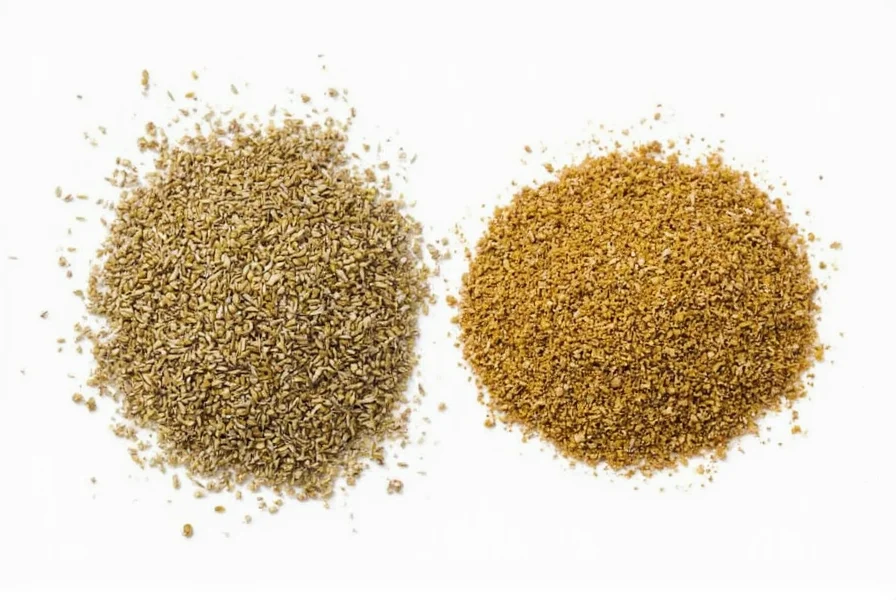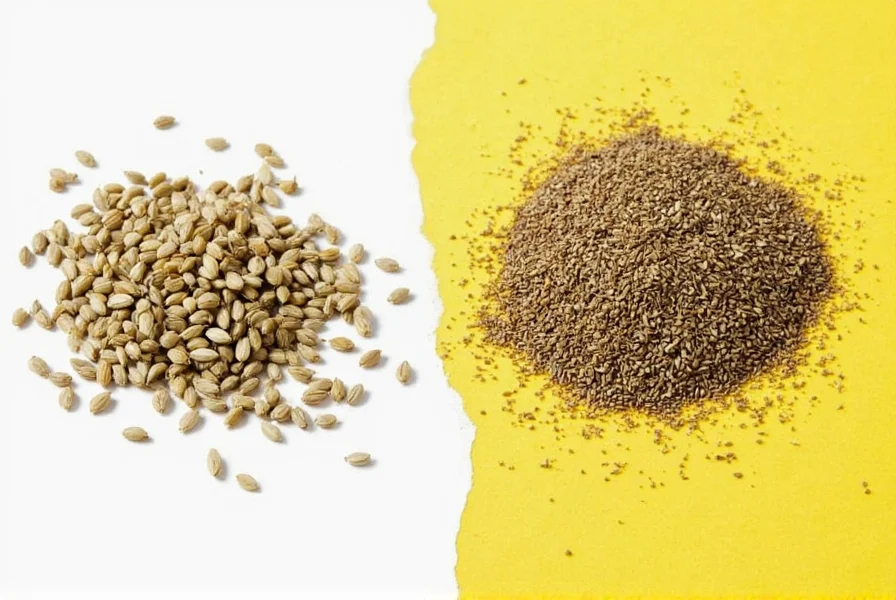Many home cooks and even experienced chefs frequently confuse fennel seed and anise due to their similar aromatic profiles. Understanding the botanical and culinary distinctions between these spices is essential for achieving authentic flavors in your cooking. Let's explore the key differences that matter in your kitchen.
Botanical Origins: Different Plants, Similar Flavors
Despite their flavor similarities, fennel seed and anise originate from distinct plants with different botanical classifications:
| Characteristic | Fennel Seed | Anise Seed (Aniseed) | Star Anise |
|---|---|---|---|
| Botanical Name | Foeniculum vulgare | Pimpinella anisum | Illicium verum |
| Plant Family | Apiaceae (carrot family) | Apiaceae (carrot family) | Schisandraceae (magnolia family) |
| Native Region | Mediterranean | Mediterranean/Middle East | China/Vietnam |
| Primary Flavor Compound | Anethole (80-90%) | Anethole (80-95%) | Anethole (90%) |
The shared dominant compound—anethole—explains why both fennel seed and anise deliver that distinctive licorice flavor, but their secondary compounds create notable differences in culinary applications.
Physical Characteristics Comparison
When examining these spices side by side, several visual and textural differences become apparent:

- Fennel seeds: Longer (4-10mm), greenish-brown when fresh, turning yellow-brown with age. They have a straighter shape with five distinct ridges and a slightly sweet aroma with herbal notes.
- Anise seeds: Smaller (3-5mm), grayish-brown with a more curved, boat-like shape. They have a more intense, pure licorice aroma without the herbal undertones of fennel.
- Star anise: Eight-pointed reddish-brown star shape (each point contains a seed). It has the strongest anethole concentration and a more complex, slightly bitter flavor profile.
Culinary Applications and Substitution Guidelines
Understanding when to use each spice—and when substitution works—is crucial for recipe success. While both fennel seed and anise contribute licorice notes, their different flavor profiles make them better suited for specific dishes.
Fennel seed shines in Mediterranean cuisine, particularly in Italian sausage, fish dishes, and breads like Italian pizzelles. Its flavor is more subtle and herbal, making it versatile in both sweet and savory applications. Anise seed, with its more intense licorice flavor, features prominently in Middle Eastern spice blends, Greek ouzo, and Mexican mole sauces.
When considering can I substitute fennel for anise in recipes, the answer depends on the dish:
- For subtle licorice notes (bread, light sauces): Use a 1:1 substitution
- For strong licorice flavor (liqueurs, intense spice blends): Use 1.5 parts fennel for every 1 part anise
- In delicate dishes like custards: Anise may overpower, so fennel works better
- In traditional recipes like biryani or absinthe: Substitution alters authenticity
Nutritional and Medicinal Properties
Both spices offer health benefits, though their specific properties differ. Understanding the fennel seed and anise nutritional differences can help you choose based on dietary needs.
Fennel seed contains higher levels of potassium and vitamin C, with traditional use for digestive issues and menstrual discomfort. Anise seed has more iron and calcium, historically used as an expectorant and for respiratory conditions. Both contain antioxidants, but fennel's flavonoid profile differs from anise's phenolic compounds.
Modern research shows both spices demonstrate antimicrobial properties, but their mechanisms differ. Fennel seed extract shows promise for IBS symptom relief, while anise seed may help with menopausal symptoms. Neither should replace medical treatment, but both can contribute to a health-supportive diet.
Why the Confusion Persists
The persistent confusion between fennel seed and anise stems from several factors:
- Linguistic overlap: In some regions, "anise" refers to both plants
- Shared flavor compound: Anethole dominates both spice profiles
- Star anise complication: This third spice further muddies the waters
- Visual similarity: To untrained eyes, the seeds look nearly identical
Even spice vendors sometimes mislabel these products, particularly when selling in bulk. When purchasing, look for botanical names on packaging to ensure you're getting the correct spice for your recipe needs.
Practical Kitchen Tips
For home cooks navigating the fennel seed vs anise seed flavor question, these practical tips will help:
- Storage: Keep both spices in airtight containers away from light; they lose potency faster than many other spices
- Grinding: Anise seeds grind more easily than fennel seeds due to their oil content
- Taste test: Chew a single seed of each to experience the flavor difference firsthand
- Regional variations: In Indian cuisine, "saunf" refers to fennel seeds, while anise is less common
When developing recipes, consider the cultural context. Authentic Italian sausage requires fennel seed, not anise. Traditional Greek loukoumi (Turkish delight) relies on anise seed. Understanding these distinctions preserves culinary authenticity while allowing for creative adaptation when desired.

Conclusion
While fennel seed and anise share that characteristic licorice flavor due to their anethole content, they are distinct spices with different botanical origins, flavor profiles, and culinary applications. Recognizing the difference between fennel seed and anise empowers you to make informed choices in your cooking, whether you're following traditional recipes or creating new flavor combinations. The next time you reach for one of these spices, consider the specific flavor contribution each can make to elevate your dish beyond simple substitution.











 浙公网安备
33010002000092号
浙公网安备
33010002000092号 浙B2-20120091-4
浙B2-20120091-4